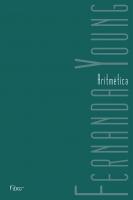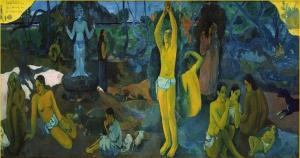Baroque: characteristics, representatives and works
The Baroque was a cultural period that spanned from the second half of the 16th century to the first half of the 18th century. It spread throughout Europe and Latin America, as well as other regions colonized by Europeans.
The baroque contrasted with the Renaissance for expressing a pessimistic, disappointed, critical and complex sensibility. This is because Baroque literature and art represent a disturbing time from a psychological, cultural and social point of view, as well as a political and economic one. But what is the baroque? How is it defined and what characterizes it?
What is the baroque?
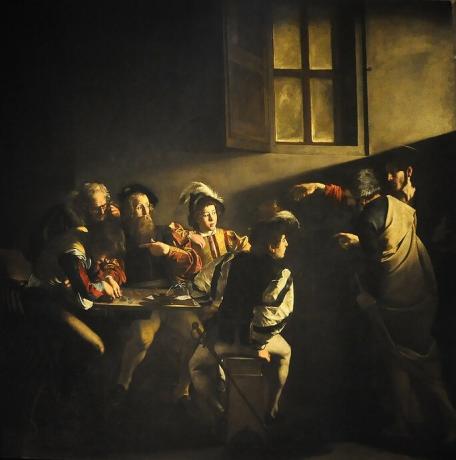
The baroque can be defined as the "art of appearing", already in the arts, already in literature. Three elements can be considered fundamental to its aesthetics: effectism, spectacularity and emotionality.
The term baroque was used for the first time in the middle of the 18th century in the context of the Enlightenment or Enlightenment. Originally, the
meaning of baroque it was taken from old Portuguese, as "baroque" designated a type of pearl with an irregular shape.In the Age of Enlightenment, the Illuminists Diderot and Rousseau used this word to pejoratively describe the art of that period, which they considered bizarre and confusing. However, later historiography has vindicated the aesthetic value of this period.
Baroque characteristics
Horror vacui
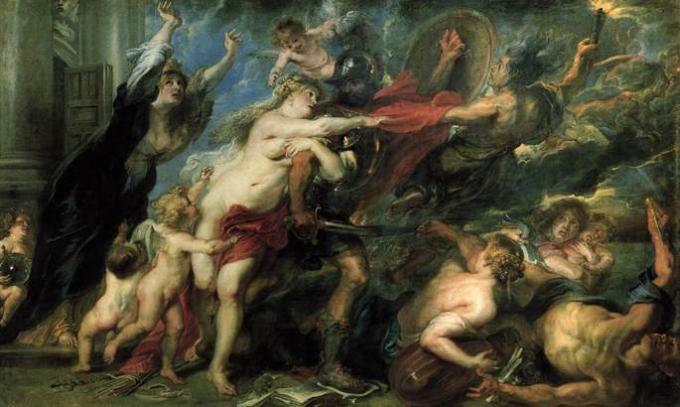
Pitti Palace, Florence.
If anything characterized the baroque, it was the beginning of the horror vacui, Latin expression that means 'horror to the void'. Baroque art, in all its manifestations, likes variegated and ornate finishes, with which it intends to fill the entire space.
Dynamism and tension
The sense of movement, dynamism and tension is fundamental in the baroque. Rest is not sought, but, on the contrary, tensions are established between forms, sounds, words or concepts.
Representation of passions and inner temperaments
The baroque moves away from the philosophical prescriptions of the Renaissance that called for measure and balance. Rather, he opts for the representation of passions and inner temperaments, both for each character and for the work as a whole.
Contrast search
In the different artistic disciplines, the baroque reveals a taste for contrast, which in the plastic arts is expressed through chiaroscuro. It applies not only to painting, but to architecture, sculpture, music and even literature.
Substitution of the absolute for the relative
The absolute gives way to relativity, in keeping with an age that lacked philosophical, theological, and cultural security. It dominates the order of perception, of effect, of the search for sensations and contradictions over closed principles.
Multiple centers
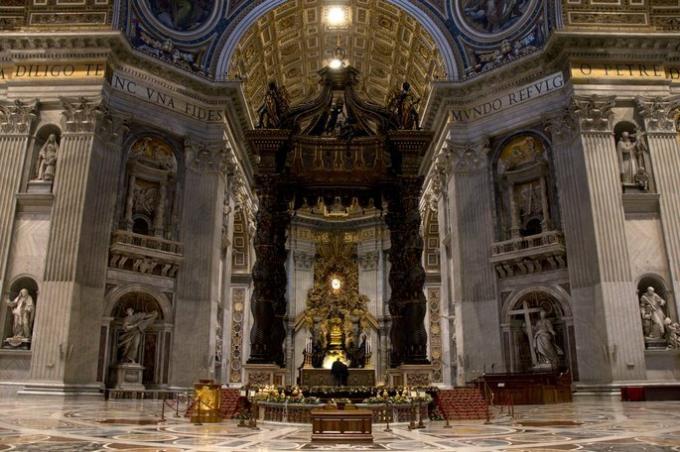
Baroque art stood out for leaving aside the idea of a work with a single center of interest (for example, in painting the single vanishing point) to resort to multiple centers. These centers often generate elliptical compositions. Such a principle was visible in all artistic disciplines, although adapted to their resources.
Incomplete or disjointed effect
The baroque promoted, consequently, the effect of disconnection or of open or incomplete work, unlike the renaissance that closed the universe of the work itself. That taste for the incomplete expressed the concern for infinity and transcendence.
Search for the metaphysical shudder
Faced with the rational will of the Renaissance, which sought harmony and balance, the Baroque prefers the promotion of metaphysical trembling.
Pessimism and disappointment
Unlike the Renaissance, the baroque is dominated by pessimistic and / or disappointed thinking, in response to the historical crisis they were experiencing.
Baroque art themes
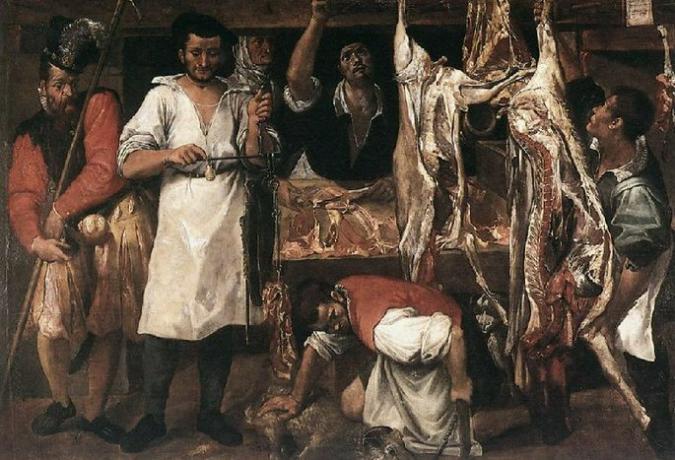
The themes of history, religion and mythology, although they preferred the scenes of greater drama and commotion.
Refering to religion, the Catholic Church set the iconography to prevent heresy. Topics such as the Immaculate Conception, the Eucharist, the saints and the triumphant Church were preferred, very sensitive issues in the dispute with Protestantism.
The allusion to the transience of time and the disenchantment of the world, as well as the customs and daily life, including social reality.
You may also like: Renaissance Y Neoclassicism.
Baroque literature
Baroque literature was characterized by the interest in detail, effect, and formal exuberance of that time. For this reason, the excessive use of literary figures was characteristic, such as adjectives, ellipsis, metaphor, hyperbaton, antithesis and periphrasis.
As for the genders, Baroque literature gave continuity to those inherited by the Renaissance. However, there was a novel development of dramaturgy, particularly in the forms of comedy and tragicomedy. These challenged the classical structure of the three dramatic units.
The baroque welcomed a great plurality of literary currents. In the particular case of Spanish literature, two were the most important currents: culteranismo and conceptismo.
The culteranismo or gongorism valued the form over the content. Consequently, it was richer in figures of speech and literary literary references. Its main representative was Luis de Góngora.
The conceptism valued the content as much as the form. It is based on the presentation of ideas or concepts through verbal ingenuity. One of its main exponents was Francisco de Quevedo.
The topics of baroque literature revolved around the concern for the transience of life, appearance and disenchantment. Namely:
- World as theater: uncertain world of appearances that invites reflection.
- Upside down world: I lament about the injustice and the deformation of the ought to be.
- Homo homini lupus: denounces that man is a wolf to man.
- Militia amoris: comparison of love with war.
- Changing fortune: I regret the wayward character of good fortune.
- Memento mori: reminder about the inevitability of death.
- Tempo fugit: I lament about the transience of time and existence.
- Collige virgo roses or 'cut the roses, maiden': persuade maidens to take advantage of their youth.
- Carpe Diem: invites you to seize the day as the only option in the face of inevitable death.
Authors and works of baroque literature
- Luis de Gongora, Spain, 1561-1627. Most representative works: Fable of Polyphemus and Galatea; Solitudes.
- Lope de Vega, Spain, 1562-1635. Most representative works: Fuenteovejuna; The dog in the manger.
- Francisco de Quevedo, Spain, 1580-1645. Most representative works: Dreams and speeches; The Spanish Parnassus; History of the life of the Buscón.
- Tirso de Molina, Spain, 1579-1648. Most representative works: The Trickster of Seville; The condemned as distrustful; The shameful one in the palace.
- Pedro Calderon de la Barca, Spain, 1600-1681. Most representative works: The life is dream; The great theater of the world; The constant prince.
- Sor Juana Ines De La Cruz, New Spain, 1648-1695. Most representative works: Divine narcissus; Redondillas; First I dream; The efforts of a house.
- John milton, England, 1608-1674. Most representative works: The lost paradise; Twenty three sonnets; Comus; Arcades.
- Giovan Battista Marino, Italy, 1569-1625. Most representative works: Rime him; The lyre; 'L'Adone'.
- Jean-Baptiste Poquelin or Molière, France, 1622-1673. Most representative works: Tartuffe; The imaginary patient; The doctor with sticks.
- Jean racine, France, 1639-1699. Most representative works: Phaedra; Andromache; Iphigenia.
See also:
- Baroque poems.
- The life is dream, by Pedro Calderón de la Barca.
- Sor Juana Inés de la Cruz: biography, work and contributions.
- Literary trends
Baroque art
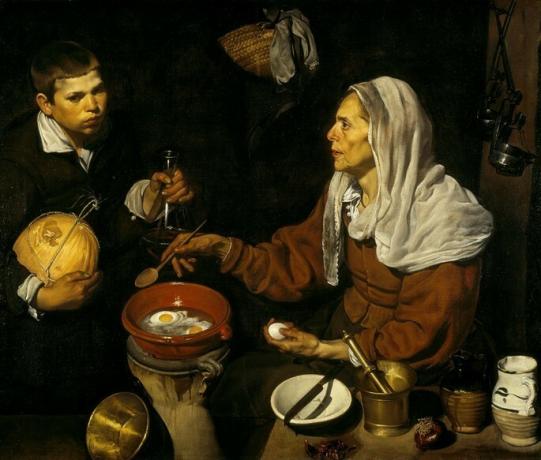
Like the rest of the artistic expressions of the Baroque, the plastic arts are essentially characterized by dynamism and tension in composition.
This was reflected in specific features such as the use of multiple vanishing points; open planes; asymmetric compositions; excessive ornamentation; richness in details and frank taste for color.
New pictorial genres also appeared in the Baroque, such as collective portraits, still lifes, the vanitas, genre painting and landscape.
The corporate portraits or collectives portrayed several people on a single canvas. Frequently, they alluded to people gathered around trades, guilds or professions.
The still lifes or still lifes represented animal and vegetable food, flowers and utilitarian objects. In prosperous countries, they expressed abundance. In countries in crisis, like Spain, they expressed the famine.
The gender vanitas it is a variation of the still lifes, which draws attention to the vanity and transience of time. That is why it includes skulls, soap bubbles, decomposing food, burning candles, etc.
The genre painting refers to everyday scenes of local color. Although it existed before the Baroque, it reaches an important revival during this period.
Finally, the scenery or country as an autonomous genre develops in the transition from Renaissance to Baroque, although it has always existed as a companion to portraits or scenes.
Visual artists, architects and works of baroque art
- Caravaggio, Italy, 1573-1610. Dark style painter. Representative works: Young bacchus; Vocation of Saint Matthew; Conversion of Saint Paul and the Crucifixion of Saint Peter.
- Annibale Carracci, Italy, 1560-1609. One of the creators of pictorial classicism and precursor of neoclassicism. Representative works: Butchery, The assumption (1587); Venus, Adonis and Cupid; The sacrifice of Isaac.
- Gian Lorenzo Bernini, Italy, 1598-1680. Sculptor, architect, painter, draftsman and set designer. Representative works: Apollo and Daphne; The abduction of Proserpina;Ecstasy of Santa Teresa; Chair of St. Peter, St. Peter's Square, Vatican, Rome.
- Francisco de Zurbarán, Spain, 1598-1664. Dark current painter with compositional simplicity and great realism. Representative works: Adoration of the shepherds; Saint Francis in meditation; Mystical betrothal of Saint Catherine of Alexandria.
- Diego de Silva Velázquez, Spain, 1599-1660. Dark naturalism painter. Representative works: Aguador of Seville; Adoration of the Magi; The Surrender of Breda; Crucified Christ, Las Meninas or The family of Philip IV.
- Bartolomé Esteban Murillo, Spain, 1617-1682. Painter oriented to religious themes with a humane and simple treatment. Representative works: The Holy Family of the little bird; The Virgin and Child with Saint Rosalia of Palermo; numerous versions of the Immaculate Conception.
- Petrus Paulus Rubens, Netherlands, 1577-1640. Painter who stands out for his treatment of the tension between the intellectual and the emotional and formal dynamism. Representative works: Triptych of the Resurrection of the Cross; The judgment of Paris; The Adoration of the Magi; The abduction of Proserpinto; The three graces Y The garden of love.
- Rembrandt Harmenszoon van Rijn, Netherlands, 1606-1669. Themes of great drama, dynamism and realism in corporate portraits. Representative works: The Anatomy Lesson of Dr. Nicolaes Tulp; Philosopher in meditation or Scholar in meditation; The return of the prodigal son.
- Anthony van Dyck, Netherlands, 1599-1641. Lush and dynamic style that was transformed into elegant and solemn. Representative works: The Arrest; Carlos I as a Hunter and Equestrian Portrait of Carlos I.
- Nicolas Poussin, France, 1594 -1665. Representative of the French classicist trend of the seventeenth century. Representative works: The plague of Azoth; Adoration of the golden calf; The shepherds of Arcadia.
You may also like:
- Baroque architecture: characteristics and style.
- Diego Velázquez: biography, characteristics and works.
Baroque music
Baroque music was truly groundbreaking in many ways. It was characterized by the development of tonal harmony and counterpoint. Likewise, with the baroque music, the continuous bass appeared, the clear and delimited rhythm was established and improvisation and virtuosity were promoted.
No less important, the baroque was responsible for the invention of the orchestra, although by then it was a smaller orchestra than we know today.
The creativity of baroque music was not limited to the characteristics of the new musical language.
Numerous musical genres were created in the baroque, such as the opera, the oratorio, the cantata, the sonata, the concerto grosso and the suite room.
The Opera it was promoted by the composer Claudio Monteverdi. It integrated theatrical art with singing, and was essentially composed of recitatives and arias for soloist, choirs and an instrumental overture.
The oratory it is also associated with the singing of a story, but this is not staged. The stories of the oratories are religious, hence its name. For its part, cantata It is a musical form destined to be sung, and to religious themes, and to secular themes, which combines instrumental numbers with recitatives, arias and choruses.
As for instrumental music, the sonata was intended for the exhibition of one or more solo instruments, while the concerto grossoit meant the beginning of orchestral music. To this was added the suite room, a succession of pieces to dance, normally structured in four movements.
Musicians and composers
- Claudio Monteverdi, Italy, 1567-1643 Most representative works: The Fable of Orpheus; The Coronation of Poppea; Madrigals various.
- Antonio Vivaldi, 1678-1741. Most representative works: The four Seasons; Stabat Mater; Mandolin Concerto; Concerto alla rustica.
- Jean-Baptiste Lully, France, 1632-1687. Most representative works: Cadmus and Harmonia; Amadís; Royal ballet of flore, lwv 40.
- Marc-Antoine Charpentier, France, 1643-1704. Most representative works: Magnificat; Port Royal Mass; Le Malade imaginaire; David et Jonathas.
- Johann pachelbel, Germany, 1653-1706. Most representative works: Canon in D major; Musikalische Sterbensgedancken; Hexachordum Apollinis.
- Johann Sebastian Bach, Germany, 1685-1750. Most representative works: Oratory Passion according to Saint Matthew; Toccata and fugue in D minor, BWV 565; The well-tempered harpsichord; Inventions and Symphonies.
- Georg Friedrich Handel, Germany, 1685-1759. Most representative works: Oratory The Messiah; Giulio Cesare; Acis and Galatea; Saul; Water music.
- Henry purcell, UK, 1659? -1695. Most representative works: Dido and Aeneas; Full Anthem; The queen of fairies. Anthem; The queen of fairies.
Historical context of the baroque
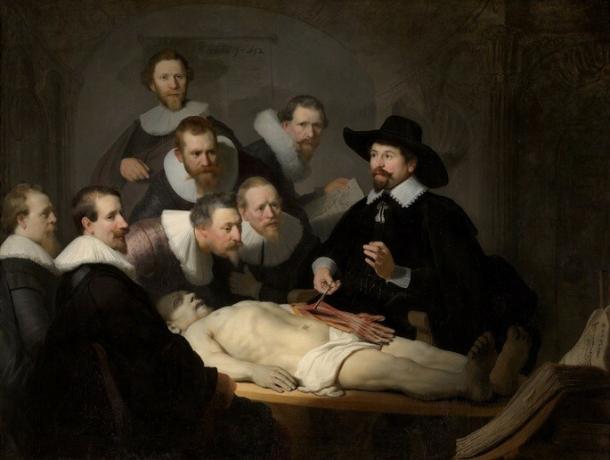
The aesthetics of the Baroque was a consequence, in part, of the impact of certain historical antecedents that promoted the emergence of highly diversified artistic proposals in the following years.
On the one hand, the discovery of America in 1492 put an end to the isolation of the American continent. With this, it favored the consolidation of absolutism, the conquest and colonization of America, the triumph of commercial companies and transoceanic traffic.
For their part, the Lutheran Reformation in 1517 and the Catholic Counter-Reformation in 1545 broke the cultural and spiritual unity of Europe. In the midst of this, Copernicus' heliocentric theory around 1543, Galileo's advances, and Kepler's laws shook the foundations of creationism and anthropocentrism.
Add to that the crisis in Europe in the seventeenth century. Fall of the economy, price revolution, social upheavals, wars (War of the 30 years, Crisis of 1640 in Spain), famines, epidemics and fall of the demographic index, etc.
All this contributed to the baroque expression in a very dynamic, creative, original art and, above all, diverse in its universe of styles, themes and resources in each country where it was manifested.

